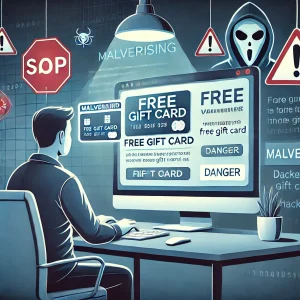 QR codes have slipped into daily life so smoothly that most of us barely register them anymore. They’re on tables in restaurants, taped to windows, printed on flyers, and sitting on parking meters. They offer quick access to menus, payment portals, and websites without any typing.
QR codes have slipped into daily life so smoothly that most of us barely register them anymore. They’re on tables in restaurants, taped to windows, printed on flyers, and sitting on parking meters. They offer quick access to menus, payment portals, and websites without any typing.
Because of that convenience, many people scan them automatically without pausing to think about where they might lead.
Unfortunately, that same convenience is exactly what criminals are taking advantage of.
There is a growing scam called quishing. The term comes from QR code phishing, and it works the same way traditional phishing does, but with a twist. Instead of clicking a suspicious link, you hold your phone camera over a code that quietly directs you somewhere you shouldn’t go.
When you scan a malicious QR code, you might be sent to a fake payment page designed to steal your card information, a false login screen meant to harvest your username and password, or a website that attempts to install malicious apps or spyware on your device.
The code itself looks harmless, which makes people less cautious than they might be with a strange link in an email.
One of the biggest challenges with QR codes is that you can’t tell where they lead until after you’ve scanned them. The printed square gives no clues about its destination. People often assume that because a QR code looks official or appears in a familiar location, it must be safe. Criminals take full advantage of that misplaced trust.
It doesn’t take much effort for scammers to cause trouble. Many simply print their own QR code stickers and place them over legitimate ones. A quick peel-and-stick is enough to redirect unsuspecting scanners to a fraudulent site.
This happens frequently in high-traffic areas such as parking lots, transit stops, coffee shops, or shop doors. Busy people rushing from one place to another rarely stop long enough to spot the switch.
Others send scam emails crafted to look like messages from legitimate companies. They may use believable wording, familiar logos, and professional formatting. Hidden inside is a QR code that sends you somewhere dangerous.
Because people are used to scanning codes from everything from delivery services to loyalty programs, these fake emails blend in easily.
These scams often play on urgency. You might be told that your account is in danger, a bill is overdue, a delivery is waiting, or that you’ll miss out on something if you don’t act immediately.
When people feel pressured, they tend to react quickly rather than carefully. Scammers count on that moment of distraction, that second where you scan first and think later.
The good news is that there are simple ways to protect yourself. Awareness and caution go a long way.
Be careful with QR codes that arrive in unexpected emails or messages, especially if the sender is unfamiliar or something feels off. If you’re asked to log in, reset a password, or make a payment, go directly to the official website instead of using the QR code. A few extra seconds can prevent a major headache.
When scanning QR codes in public spaces, take a moment to look at them closely. If a sticker looks crooked, worn, or placed on top of another label, avoid it. If the surface appears tampered with or altered, treat it as suspicious. It may feel like you’re being overly cautious, but it’s far better than walking straight into a scam.
Even after you scan a code, stay alert. Before you enter any personal information, double-check the website address. Make sure the URL looks correct, the site is secure, and nothing seems unusual. If something feels wrong, close the page immediately.
QR codes are not going anywhere. They’ve become a convenient tool for both businesses and customers. Most codes are perfectly safe, but now that criminals have figured out how to exploit them, everyone needs to build a habit of pausing before scanning.
The same guidance applies to your staff. A simple moment of caution could prevent data, financial information, or access to systems from ending up in the wrong hands.
If you want to make sure your team stays informed about current cybersecurity threats and knows what to watch out for, we can help. Reach out anytime.


 One phone call could be all it takes to bring your business to its knees.
One phone call could be all it takes to bring your business to its knees.